HIStalk Interviews Stephan Landsman, JD, Emeritus Professor of Law, DePaul University College of Law
Stephan Landsman, JD is emeritus professor of law and organizer and director of the Clifford Symposium on Tort Law and Social Policy at the DePaul University College of Law in Chicago, IL. He co-authored “Closing Death’s Door: Legal Innovations to End the Epidemic of Healthcare Harm” this year.

What malpractice risk is involved when clinicians conduct virtual visits?
One of the things that is most concerning is the need for continuity and follow-up. If you are going to conduct medical care by telephonic means, you need to have a reliable system that will keep track of what you’ve advised, what you’ve observed, what tests you need, what the results of those tests are, what follow-up is necessary, what medications ought to be prescribed, and so forth.
Care is not a one-shot deal. It’s not a one phone call kind of thing. It’s a heck of a lot easier to keep track of folks if they show up in your office. It’s more challenging when they don’t.
The same is obviously true with respect to the kinds of data entries that you make as well. Medical records are incredibly important. Tracking care, tracking information, building up the profile of what the patient’s issues may be, or how they develop or what the reaction to medications is. All of that stuff needs to be entered, needs to be available, and needs to pass before the eyes of the person who was given advice.
By analogy, the hardest time in hospital treatment is the time when one doctor passes the care of a patient off to another. In that situation, you have to have effective communication. You have to have a kind of underscoring of what’s valuable. The same thing is going to be true if the tele-treating physician is not practicing alone, but rather is in a large group, which is usually going to be the case. You need good systems, good data management that’s will get everything of relevance to each of the physicians each of the times that contact, care, or assistance is being done.
Is it sustainable in a litigious environment that telehealth doctors who don’t work for health systems often don’t have access to the patient’s medical records?
There are a couple of kinds of considerations that we ought to think about. The first one that comes to my mind is helping the patient understand that this is real medical care — it’s not a one-shot deal. It may require follow-up, and if follow-up is what we’re thinking about, is there a local physician? Is there an appropriate testing facility? Is there appropriate laboratory? All of that stuff needs to be worked out between the patient and the doctor so there is no perception that you have a one-shot deal. Even if the patient thinks that, the doctor and the treating organization have got to work on the assumption that it isn’t so. That it’s not simply a sore throat and an appropriate prescription that is going to kill a bug, if it’s that kind of thing.
This seems to me to be a very important cultural change to make, both patients and for medical organizations, that when there isn’t an understanding that medical care and medical examination is an ongoing process, then you get particular problems that can lead to legal claims to malpractice and a big mess.
What risks would you warn physicians about as they consider doing virtual visits for a for-profit company as a contractor rather than an employee?
That creates the possibility that there won’t be follow-up. That there won’t be that connection and commitment to patient care that I think is important. That model is one that needs to have some pretty clear ground rules, and some of those have got to come from the physician providing care. He or she has to understand that it’s not ever going to be a one-shot deal.
Lawyers at our school, or at least when I do it, are taught that you can’t give advice without being ready to follow up on that advice and without being committed to the relationship. That first conversation is only the beginning of a relationship. You have to understand this set of situations, patients and doctor, as presenting very similar sorts of demands.
We’re in the midst of culture of change here, and it ought to be emphasized that the treatment via contacting a doctor on the telephone is a very valuable plus to extending care, especially into parts of the population that for financial reasons, psychological reasons, or whatever are very resistant to real face-to-face medical care. But it’s got to be thought of as a relationship. These are not one-shot deals. That’s when you get in trouble, when you think that they’re one shot and don’t have follow-up and don’t have understanding. That tends to be the place where we are likely to see the greatest trauma.
The pandemic led to a relaxation of regulations involving state licensure and requiring initial visits to be conducted in person. Will this loosening of requirements, whether temporary or permanent, raise new legal concerns?
I think it will, yes. We’re feeling our way here. We’re moving in new directions, and the professional responsibilities that will arise out of those new sorts of relationships are ones that we haven’t fully and completely defined. The requirement of face-to-face first has generally not done well in court and has been viewed as a restrictive protection of in-state doctors.
We need to extend the umbrella of care, but having said, that it’s not one phone call. One phone call does not address chronic conditions like diabetes. One phone call does not address progressive heart failure. It’s got to be understood that there’s more going on here. That is part of the change in the universe.
Medical malpractice has often been a signaling device by which medical profession is informed of things that are just not good enough. I’ve done that with things like informed consent, and with a variety of kinds of decision-making between patient and doctor. You’re going to see some of the same kind of considerations being hashed out in future litigation. I certainly would advise to have good insurance coverage in providing this kind of care for any organization that wants to do it, and at the same time, a very careful kind of assessment of what good medical practice requires.
Some investor-funded companies sell prescription products such as unproven COVID-19 treatments and vanity drugs online and use telehealth providers to prescribe them. Does the pressure to issue the prescription increase clinician exposure to risk?
I think that it does. It’s hard to say because it really depends a lot on what’s said, what’s required by the people who are paying the rent, and all that kind of thing. My mind immediately jumped to the time in the United States when online or similar sorts of pharmacies were providing opioid prescriptions through call-in or online mechanisms. Eventually the Congress said, we can’t live with that. That really is in essence of way of fueling what we now believe is the opioid epidemic. Now if you think about that as a model where the danger is fairly substantial, you can say, we are again as a society going to see those kinds of problems and we’re going to react to them.
In the interim, it’s going to be a fairly unpredictable situation. I would not think that it is wise to offer what is in essence medical advice and treatment in situations where your hands are tied about what reactions you can provide and what products you have to present or sell or whatever.
What due diligence and malpractice insurance review should a physician consider when considering doing contract virtual visits for a telehealth company?
You would really want to ask all of those sorts of questions. This is going to sound excessive, but you probably want expert legal advice. We are in a changing field. I would not want to be committed to providing care that was limited in ways that I knew or should have known were handicapped to the patient’s detriment. Part of that is medical due diligence and part of that is legal inquiry. Each of the states is different with respect to these matters. It seems to me that you want to be pretty darned careful about this kind of thing.
I think physicians are pretty concerned about exposure to med mal when they sit down with patients. They should bring that concern to the situation where they’re providing medical advice over the telephone. Part of that is medical scrutiny. Is it good enough? Does it meet the standards? That’s really a question about the profession in the particular state. But part of it is also, where are the courts? Where’s the legislation? What’s been happening? You need some legal advice. I’d be careful about this kind of thing.
It’s a great area. It’s a changing area. You miss something if you don’t see the positives here, because I think there really are substantial positives, but you know we are talking about people’s lives and people’s health and their safety. When that’s going to be jeopardized, you’re going to see a social reaction and there interested parties who are going to push that. Medical societies are not particularly happy with this stuff, they’re going to push, and they have some clout.



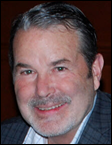

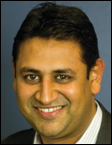

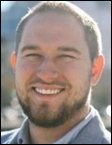






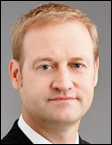
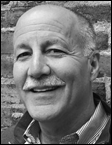


I dont think anything will change until Dr Jayne and others take my approach of naming names, including how much…